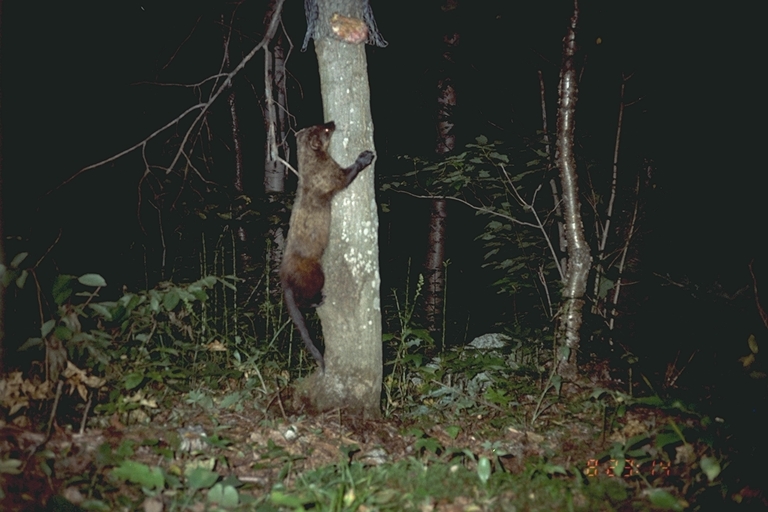
While the animals are difficult to spot, wildlife crews in Yosemite are now finding their paw prints in the snow — an indication that they’re making a comeback in the region. Only between 150 to 300 fishers survive in the area, and their isolation has made them genetically unique and extremely vulnerable to threats.
These weasel-like animals are only about the size of a house cat, but they’re known to take down animals twice their size, including bobcats. (There have been nearly a dozen reports of fishers taking down Canada lynx in New England!) They’ve been described as a combination of bear and squirrel, if you can imagine such a thing.

Fishers are feisty and will kill their prey with a powerful bite to the neck. “A fisher really doesn’t have any boundaries in the size of the animal it’s willing to attack,” says Scott McLellan, a wildlife biologist with the Maine Department of Inland Fisheries and Wildlife. “They are just a ball of fury,” he told National Geographic.
These carnivorous mammals have been heavily trapped for their fur, and were virtually eliminated from several parts of the United States by the mid 1900s. Now, with forest management practices improving, reintroductions, and some protections in place, fisher populations are starting to rebound.
These guys are critical for maintaining balance in forest ecosystems, especially by controlling porcupine populations. Experts have noticed that in areas where fishers have been extirpated, porcupine populations have increased exponentially, which has led to extensive damage to timber crops.
Fishers, while a little feisty, are an essential part of the ecosystem and should be respected as such.




